Discovering Théo Levaltier’s Jumping & Chiming Hour School Watch Project
Going the extra mile by crafting a jumping hour watch with a striking mechanism.

School Watch Projects are a fascinating insight into today’s watchmaking educational system and a unique way to discover talented young men and women that are deeply passionate about the craft and looking to make a profession out of it. Over time, we’ve seen quite a few very interesting School Watch projects from various makers and today we’re adding one more. Following the likes of Antonin Falk, Théo Auffret, Alexandre Hazemann and others, young French watchmaking talent Théo Levaltier recently explained his personal school watch project to us. With the assignment being to create a jumping hour watch based on a movement provided by Arnold & Son (a calibre by La Joux-Perret), Théo went the extra mile! He not only crafted a jumping hour mechanism but a striking hour counter as well!
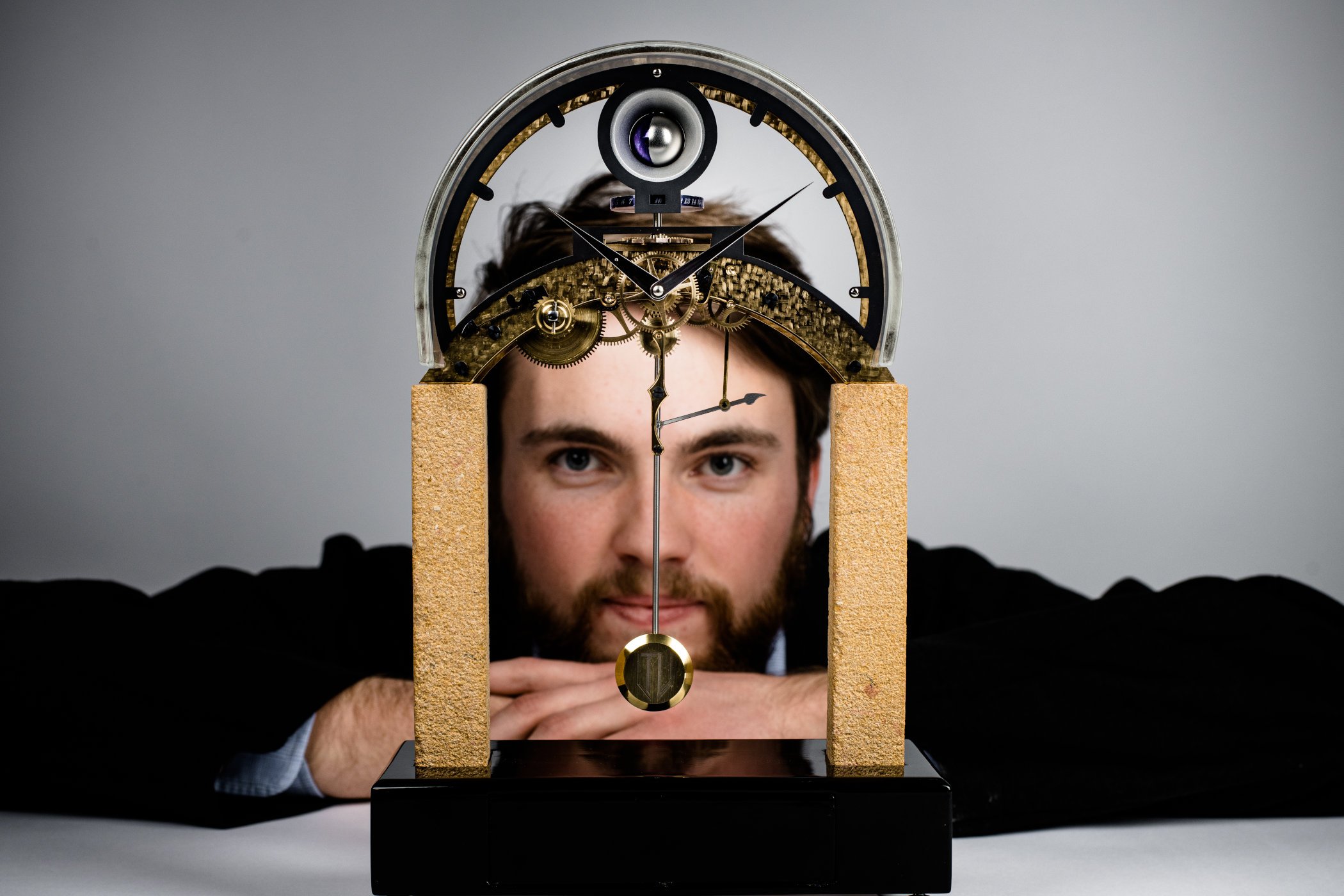
A School Watch, or Montre d’Ecole in French, is essentially a final examination of a watchmaking student’s education. A task that is given to students in the final year of watchmaking school, and intended to push the watchmakers to new heights and craft a unique watch based on an existing calibre. Over the past few years, we’ve seen some incredible examples of these School Watches come along. Watches with a newly crafted bumper automatic mechanism, jumping hours and retrograde minutes, and even tourbillons.
A school watch is not a new thing to do, as even historical and seasoned present-day watchmakers had to create a Montre d’Ecole at some point during their education. Even the likes of François-Paul Journe and Laurent Ferrier created a school watch in their early days. And although none of them are created with the idea of becoming a commercial piece, some have gone on to inspire a series of production watches.
Théo Levaltier’s school watch started with the outline of creating a watch with a jumping hour system, from scratch, to be installed on top of the LJP6900 movement provided by Arnold & Son (created by La Joux-Perret, and part of the Citizen Group like Arnold & Son). And as you can tell from the pictures, this watch turned out to be quite special! It all starts with the design of the watch, which is inspired by historic sailing yachts and racing boats, something Théo is quite passionate about. The result is a shape that flows from end to end and has interesting characteristics, to say the least.
The uniquely shaped case is finished in a bronze alloy with a natural, dark patina. It measures 43mm in diameter and is 13mm thick. Théo explained to us that the unique characteristic of this specific alloy is that any scratch in the material visually blends back in as it is “filled” with patina again. So ding it on a door or table, and two weeks later you will hardly be able to notice it anymore! A traditional crown is used to set and wind the watch, with an on/off selector for the chiming mechanism on the left-hand side.
The entire construction of the jumping and striking mechanism Théo crafted is visible under the sapphire crystal. It’s constructed over the base movement, with all the mechanicals in plain sight. It reveals a very intriguing mix of contrast, both in colour and in materials. The large S-shaped bridge, for instance, is made of titanium and acts as a pointer for the hours besides securing various components in place. The entire system that moves the hour disc can be seen in action, as well as the system for the striking hour complication. The glass hour disc has “patinated” numerals made with brass particles encrusted into the glass by laser-pointing. This is accompanied by a large central minute hand in blue (heat-treated of course, not lacquered).
Surrounding the entire “dial” of the watch is the gong for the chiming mechanism. This is struck by the long hammer mounted in the bottom section of the module. When the hour disc makes a jump on the full hour, this system starts to chime the number of the hour. So when it’s 1 o’clock it strikes once, and at 12 o’clock it will strike twelve times. The selector on the left side of the case can put the striking mechanism in silent mode, where it will still strike but an arm will hold it against the gong. That way it still vibrates, so you know the exact hour if needed, but it doesn’t ring as it normally does. Quite smart!
Everything that you can see is done using traditional machines and tools, as is common practice for students making a school watch. Sure, the design might be penned out on a computer, but most of the components are still made on lathes operated by hand. Make a mistake, and you can start all over again. The same goes for the finishing. All done by hand and using traditional tools and techniques. And as we’ve said many times before, it is projects like this that comfort us in knowing the future of the craft is being taken care of by talented newcomers such as Théo. The preservation of these techniques is of the utmost importance to keep the craft alive.
Theo Levaltier has put a sailcloth strap on this unique and fascinating watch, which is made by Jean-Rousseau, the Parisian high-end strap maker. The same material, used for sails in the early 1900s and still made the same way, has also been used to create a unique watch pouch. It suits the nautical inspiration of the watch very nicely, with its off-white colour, canvas-like texture and blue stitching! Sadly, Theo is not planning to make this into a commercial watch as of yet but I’m sure some people are very much into this steampunk-esque style. Especially with its captivating jumping striking hour mechanism that sits on top of the La Joux-Perret LJP6900 movement!
You can follow Theo Levaltier’s work on his Instagram account here.

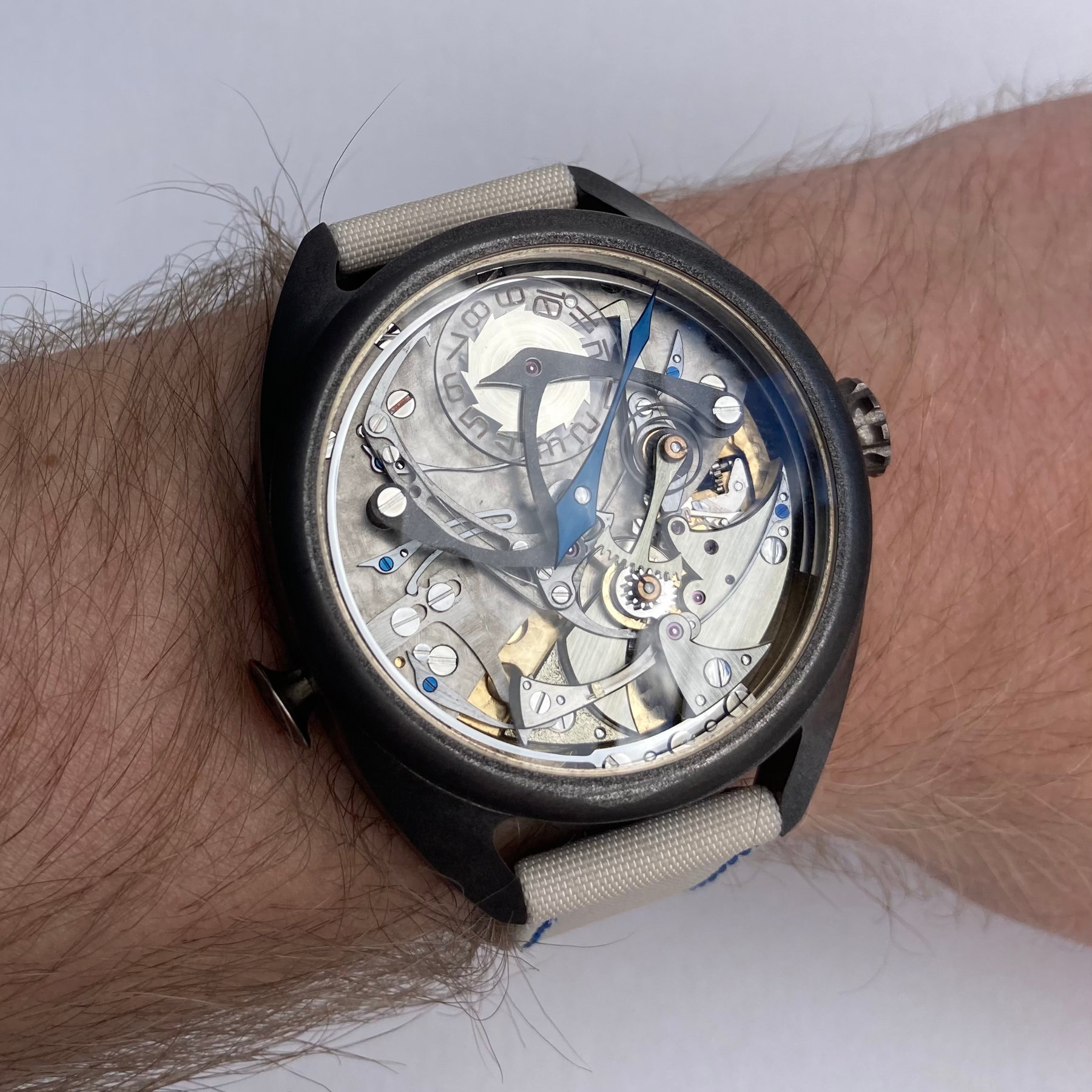
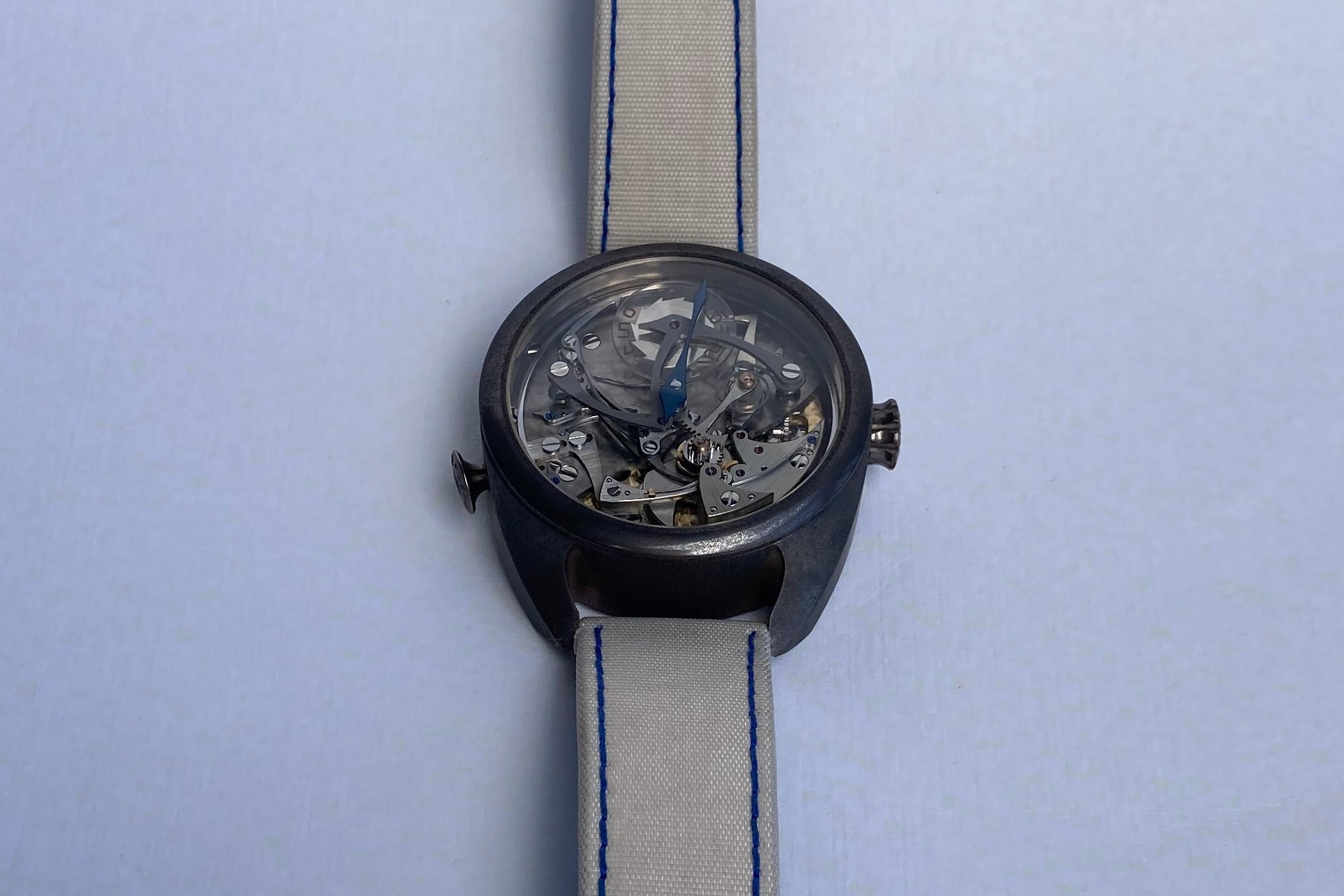
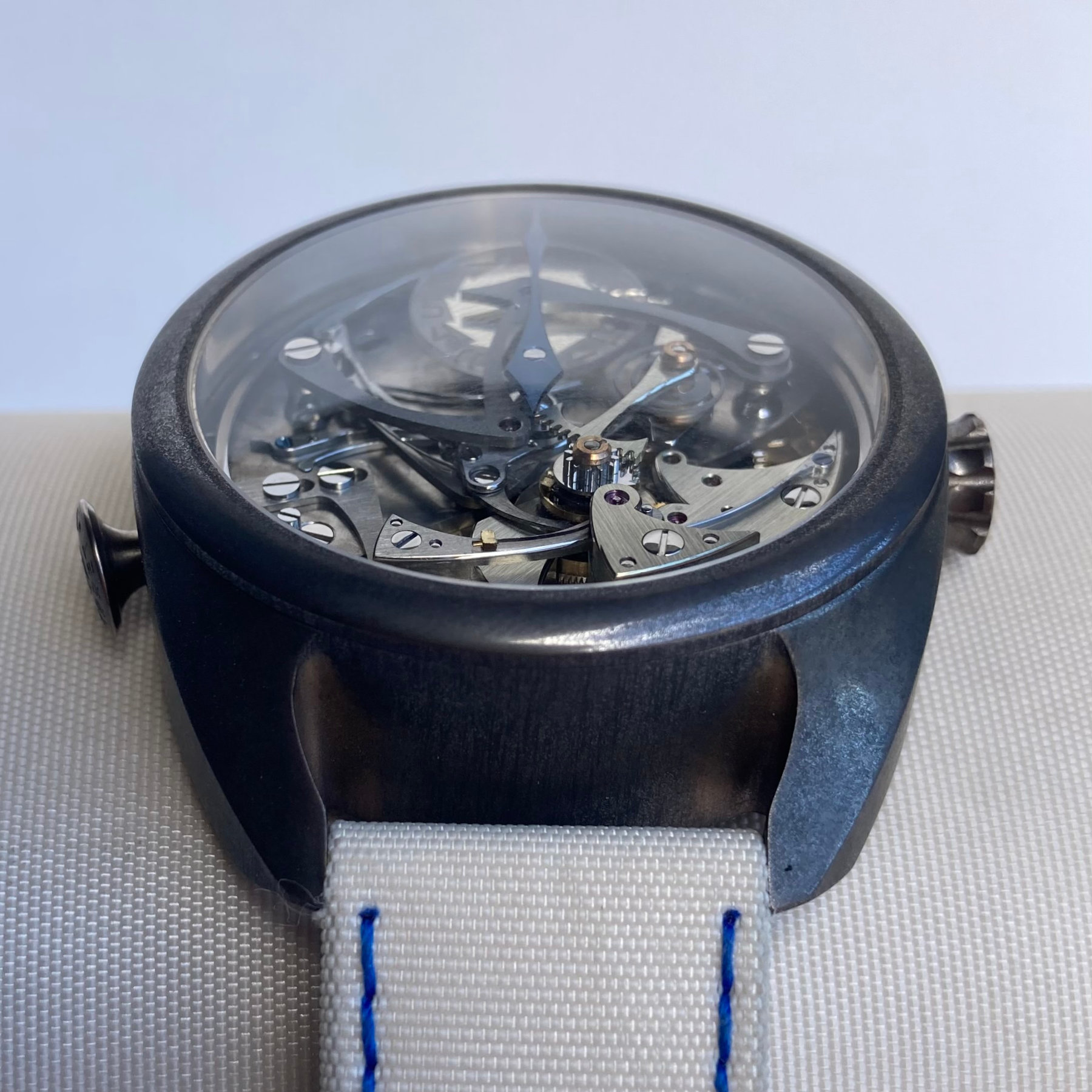
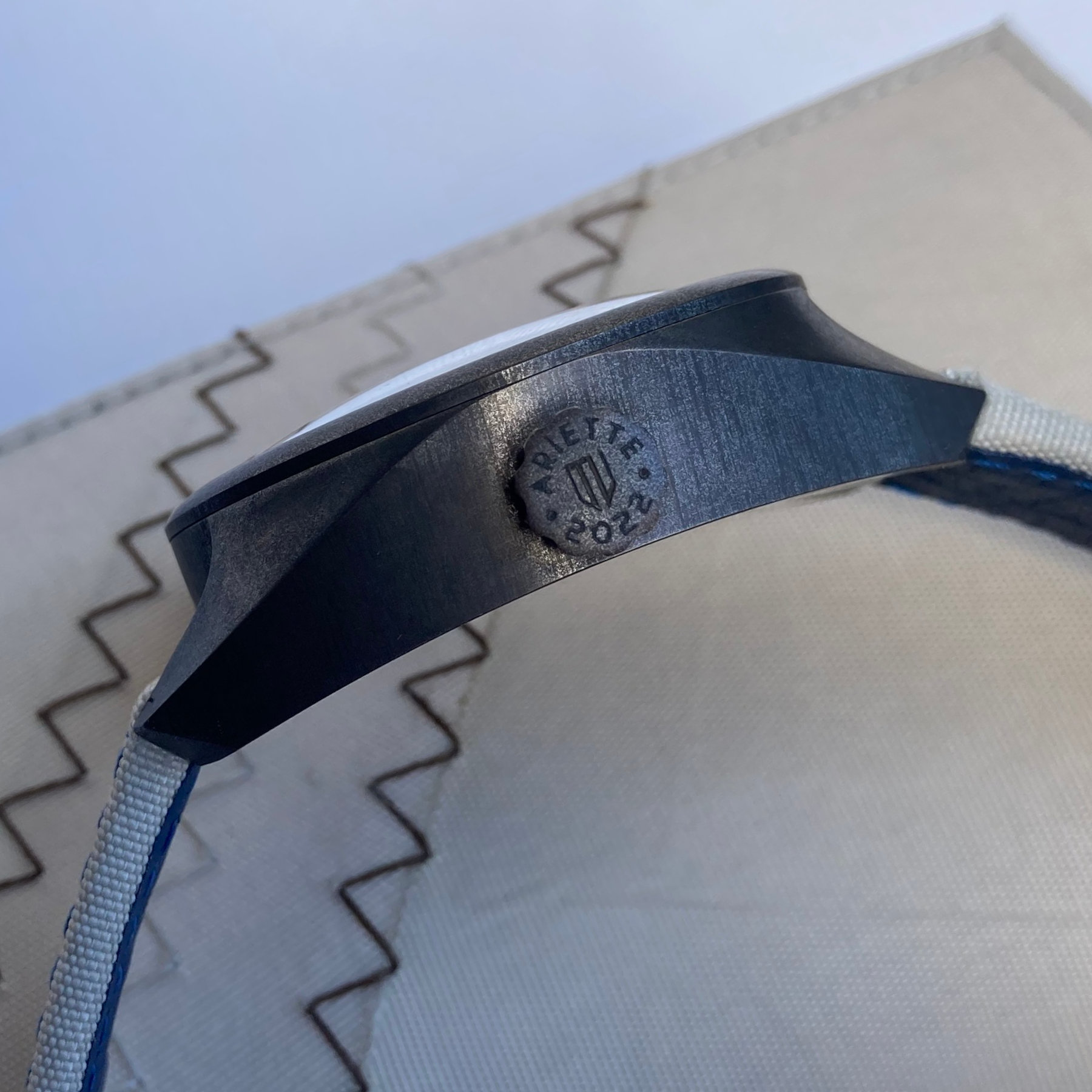
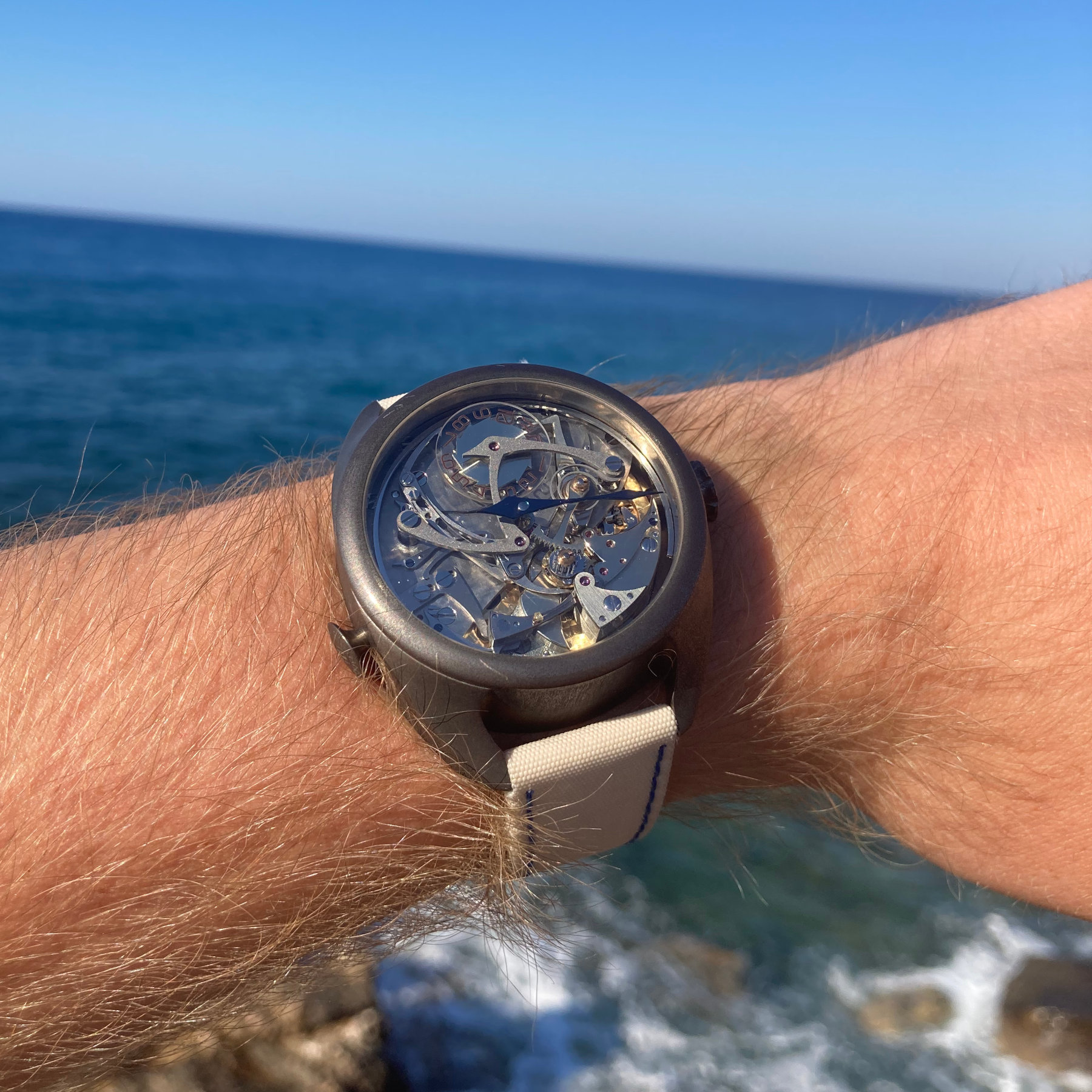
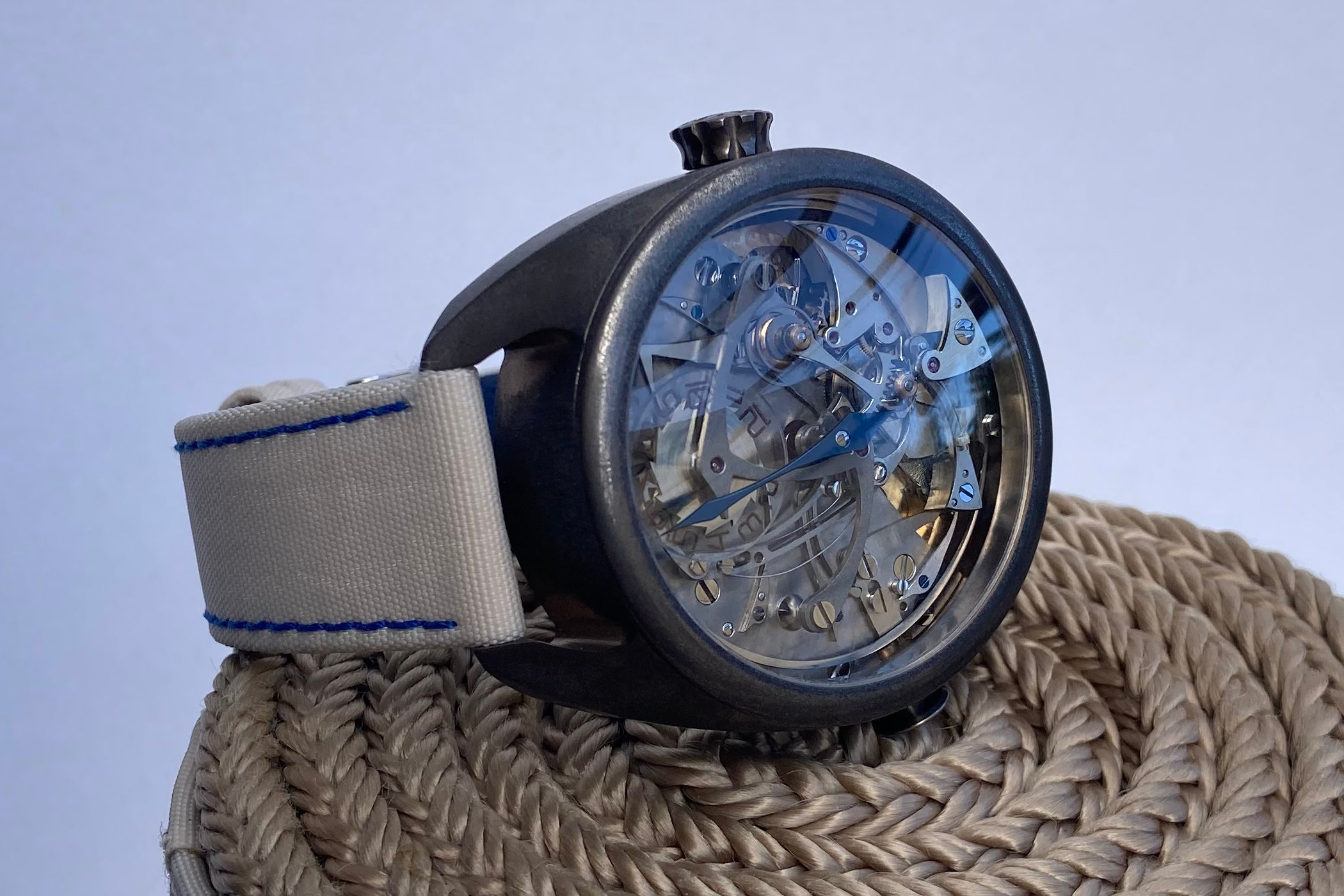
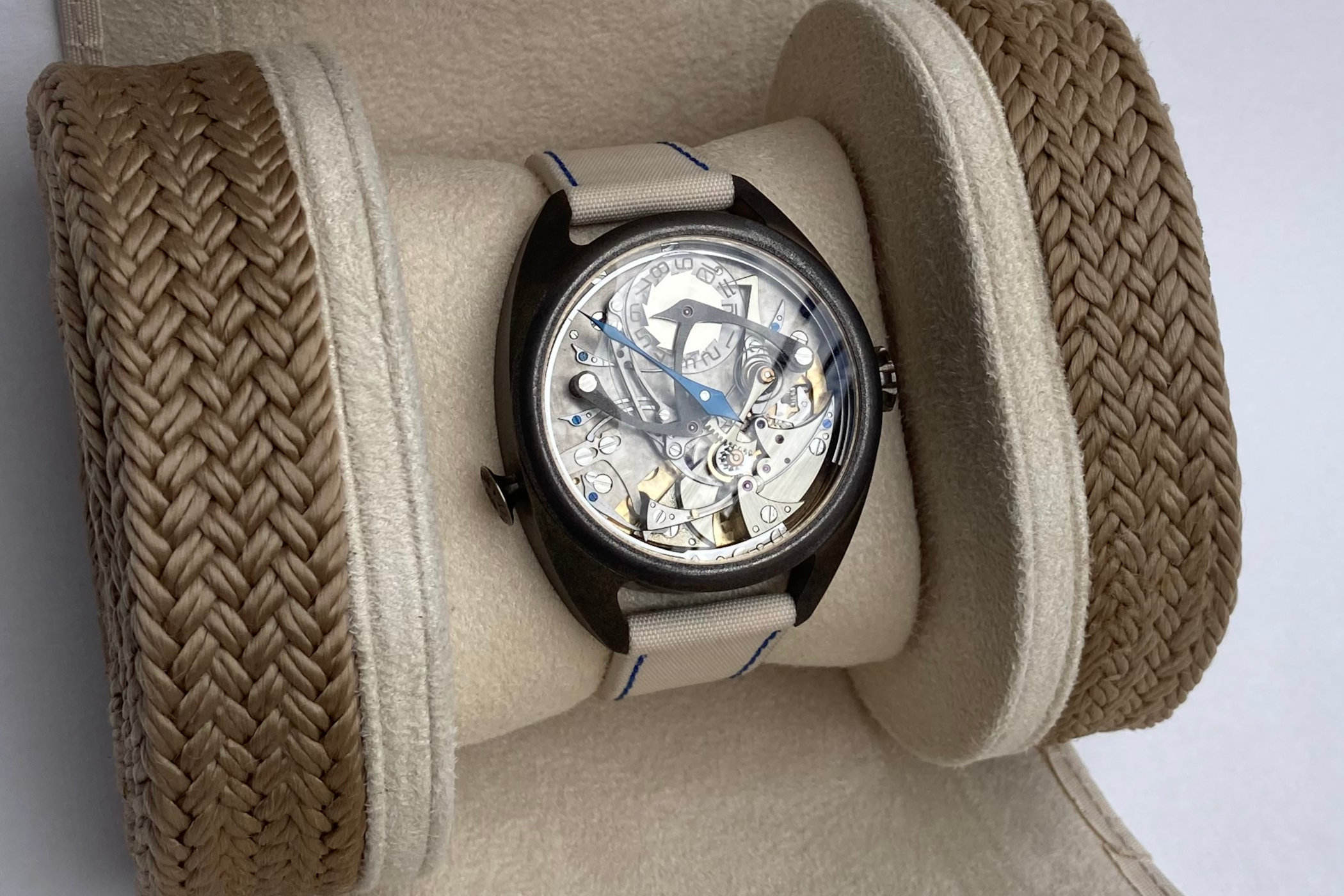




2 responses
Some people are talented, eh?
It’s so cool. All the people churning out useless watches (hello Richemont ? ) should take note